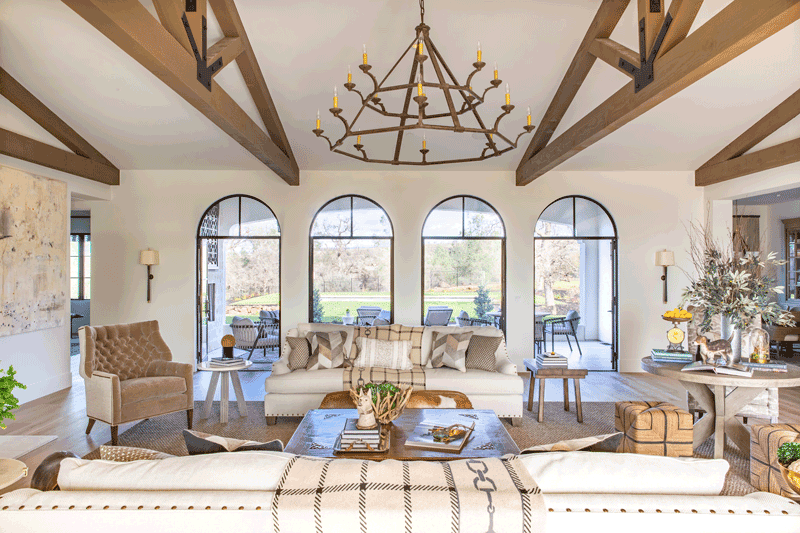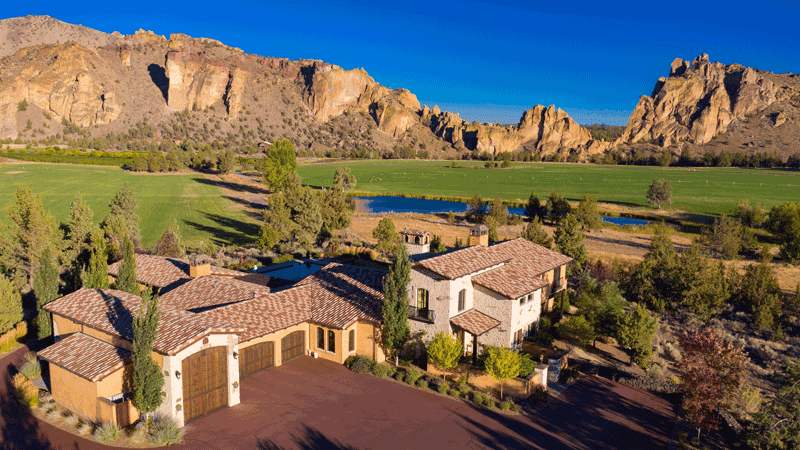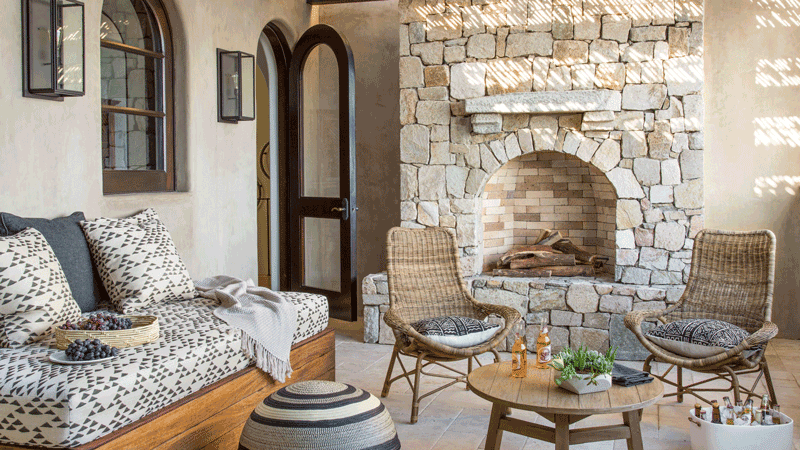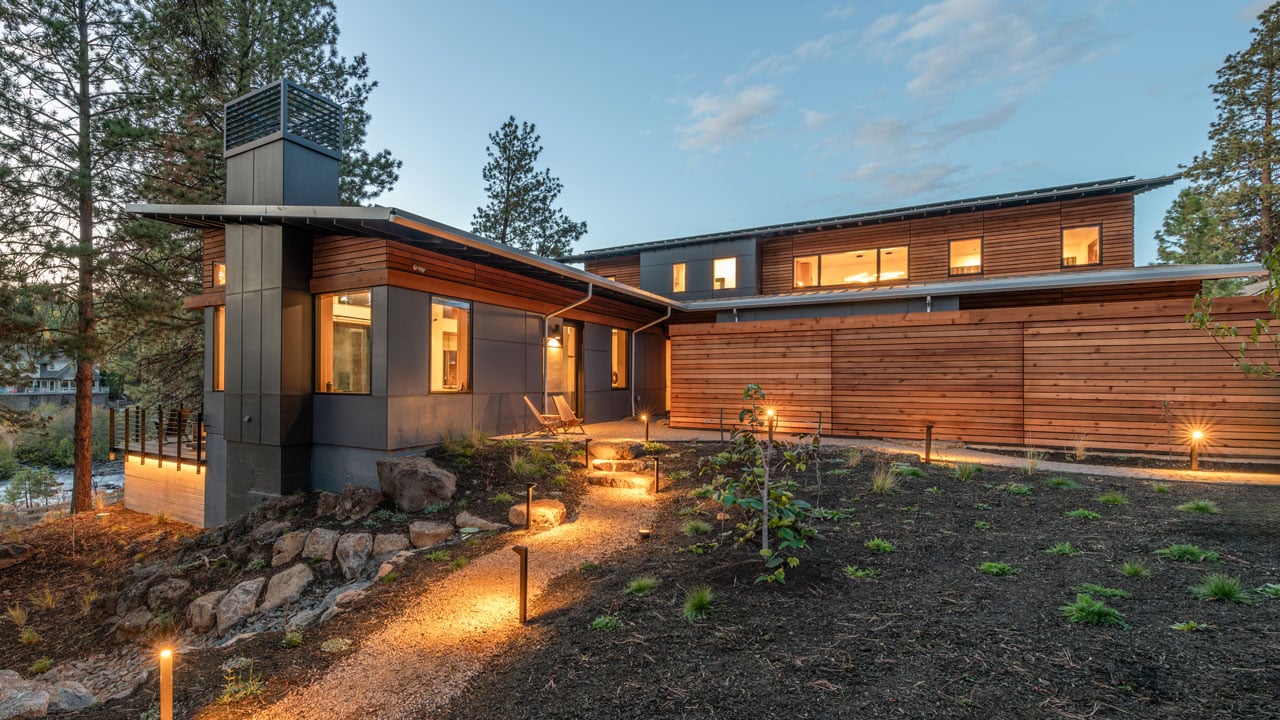Imagine a breeze wafting off the pristine shores of the coastline, and seamlessly carrying the salt air from the patio, through a stucco archway and into the living space; this is what Mediterranean-style homes are known for. The red roofs and use of exposed, natural wood throughout the space are signatures found in most of the sub-branches of Mediterranean design influenced by Italy, Spain, Greece and contemporary trends.

Though the style is sparsely found in Central Oregon, stunning architecture modeled after the homes dotting the Mediterranean can be found in pockets of the high desert. For example, Ranch at the Canyons in Terrebonne overlooks Smith Rock and other natural landscapes. There, walking onto the property transports visitors to Tuscany, where the main buildings (the Tuscan Stables, the Old Clubhouse Winery and the equestrian center) in the private residential acreage could be resting at water’s edge—or just above where the fresh air still flows through the arched windows. The tan walls of the buildings, some of which play host to weddings and other events, immediately provide a sense of serenity and a nod to what the interior looks like.

Refreshing Design
When aiming to give your home a facelift by way of manifesting the shores of Greece, Spain or Italy, you don’t have to go as far as demolishing your modern walls, or retiling the roof to mimic the grandeur of Ranch at the Canyons. Instead, implementing pieces with Mediterranean influence can make a significant difference, and refresh a home in an exciting, ageless way.
The first step is choosing accent colors that will offer contrast with the natural tones of the house. One of the most notable accent colors found in Mediterranean-style homes is a pop of blue; much like the shades found along the coast of Greece. Or, shades of reds and yellows pair nicely against tan or stucco walls from the Italian or Spanish influence. A fun way to implement these colors into your home is by creating a new backsplash with Mediterranean-characteristic tiles or mosaics.

Neutral and Natural
In all homes influenced by this style, there is a great emphasis on the fluidity of indoor-outdoor living. The transition between a comfortable, indoor living area to an equally cared for outdoor living space is usually seamless. Consider using soft neutral fabrics with similar pops of color as the indoor living area to make the path from indoor to outdoor—or vice versa—uninterrupted and open.
Another staple feature of most Mediterranean-style homes is the use of natural materials. While exposed wooden beams may not be in the cards for a house tune-up, wood furniture or decor may be. An accent chair with carved wood arms and a neutral cushion, or exposed wood shelves stacked with natural clay pots or books can also mimic the many avenues of Mediterranean interiors.
Architecturally, these homes were originally built to support a lifestyle in a climate with hot, dry summers. That being said, it may be surprising to not see as many around in the high desert. The mechanics behind the arched doors and windows, and carefully constructed stucco walls are not all that’s required to influence a home in the high desert to appear as if it’s seated on the coastline. Aesthetically, incorporating a few small changes into your living space can make it feel as if you’ve just stepped into the beautiful countries bordering the Mediterranean Sea.




